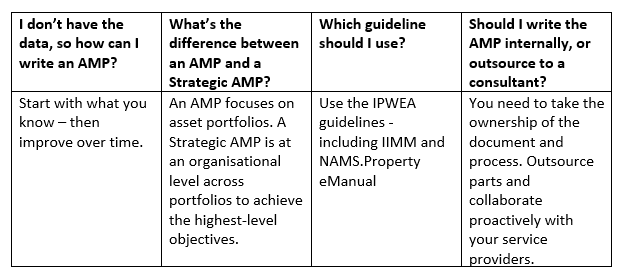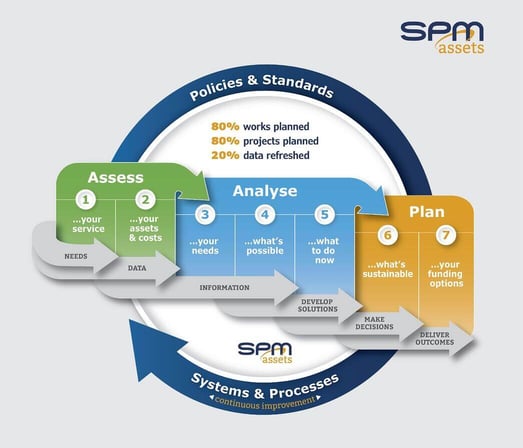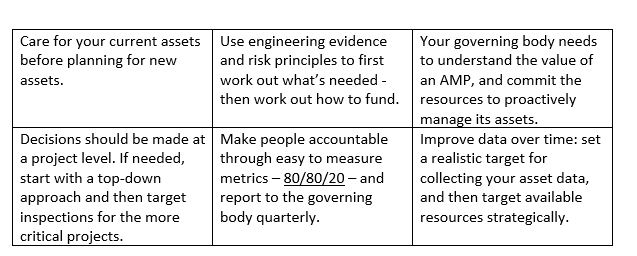Why writing an AMP can be challenging for asset managers?
Many guidelines have been written on what an Asset Management Plan (AMP) is; what it should contain; and how it should be used. There’s also a variety of guidance material for different industries, different asset classes and different regions – all taking a similar approach.
Whether you’re starting out or reviewing your current processes, as an Asset Manager you need to decide which approach is best for your organisation. Although ISO 55000 does provide the guidance on what to do, you still need to determine how to do it: how to write a meaningful AMP that will make a difference.
Common challenges asset managers face when writing an AMP:

A step-by-step guide to writing an AMP:
The starting point is to use recognised guidelines to write or review your AMP. This reduces the amount of time you spend writing the AMP, and it also avoids reinventing the wheel - which was already invented in the last century.
If you can, leverage other people's experience as much as possible for your asset class within your industry. At the same time, ensure your work is aligned with ISO 55000 and follows the principles of the IPWEA guidance material.
Writing the AMP is the easy part; the more challenging part is to think through the following key principles that will become your AMP in time. Developing your thinking, principles and data would take 90% of the time - writing the AMP may only take 10% of the time.
- Gain buy-in and commitment from your governing body on your asset management objectives, policies and strategies.
- Know your current assets and costs – this is the essential platform to build your asset management planning process.
- Know your current and future needs as defined by ‘levels of service’ statements, or standards and policies.
- Understand and manage the changing demands over time – whether political, population, financial and service delivery.
- Have confidence in your lifecycle management plans including building new, renewals, replacements, operations, maintenance and disposals.
- Know your risks including the range of potential events, their likelihood, and their consequence, and how you plan to mitigate them.
- Calculate how much will it cost over the next 10 to 20 years to first care for your existing assets before planning for new assets. List your projects that will be delivered within the next 3 to 5 years, and then produce a likely forecast from year 6 to 30. Next, determine whether this is affordable and can be achieved.
- Continually improve the underlying data and the various associated activities including business processes and systems. Having the right people that are empowered, have authority and are fully engaged is key.
Our 7-Point Asset Planning Framework provides the guidance to make this work:

Important lessons to get the most out of your AMP:

Subscribe to our Broadcast
Our monthly newsletter featuring asset management tips and insights, and the latest SPM Assets news.
